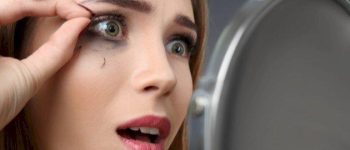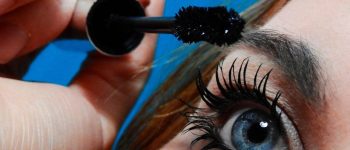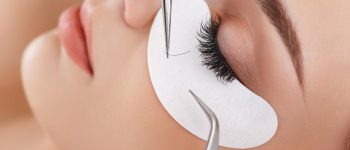Do you ever wonder how actresses and dancers achieved those captivating, full, and long eyelashes before the era of false eyelashes? Well, the secret lies in a beauty technique called eyelash beading. This practice, popular among show business professionals, added a touch of glamour to their looks by making their lashes appear darker and fuller. In this article, we’ll delve into the fascinating world of eyelash beading, exploring its history, technique, and even its downsides.
The Popularity of Eyelash Beading
Eyelash beading gained popularity among chorus dancers in the early days due to its affordability compared to false eyelashes. These hardworking individuals, who were often paid meagerly, could achieve stunning results by mastering the technique. However, eyelash beading was not limited to those on a budget. When done with skill, it could create a captivating effect that caught everyone’s attention.
Even after false eyelashes became commonplace, eyelash beading continued to thrive in the growing film industry. However, its reign slowly came to an end with the advent of the ‘close-up’ in films, which necessitated more natural-looking lashes.
The Origins and Technique of Eyelash Beading
While the exact origins of eyelash beading remain unknown, it is believed to have emerged in the late 19th century after the introduction of greasepaint. Some suggest that cosmetique, initially used for theatrical hair-fixing purposes, gave birth to this technique. For example, Leichner developed a product called Cosmetique, which could be melted to darken the lashes, in addition to its hair fixative properties.
To achieve the desired effect, eyelash beading requires a steady hand and plenty of practice. Makeup specifically designed for beading, usually in black or brown shades, is melted in a pan. The melted makeup is then carefully applied to the lashes using an applicator, often referred to as an eyelash-quill or an orange stick. In some cases, the makeup is also used to stick lashes together, providing a more prominent appearance.
Eyelash Beading in the Film Industry
Eyelash beading was not limited to the theater world; some early film stars, such as Viola Dana, also embraced this trendy technique. Their eyes looked simply marvelous, with extraordinarily long and curly lashes that appeared as if adorned with black beads. Eyelash beading undoubtedly added an extra touch of allure to their on-screen presence.
Criticism and Fire Risk
As with any beauty practice, eyelash beading had its critics. Some advised against using large lumps or ‘beads’ of greasepaint on the ends of lashes, as they could give the eyes a cross-eyed effect. Furthermore, the presence of a naked flame during the process posed a significant fire risk. Several incidents, including burns, were reported due to the use of candles for melting the beading makeup. Although electrically heated pans eventually reduced the risk, caution was still necessary.
Eyelash Beading Through the Generations
Eyelash beading eventually transcended the boundaries of show business and caught the attention of more adventurous women. Dancers, still wearing their makeup post-show, became walking advertisements for this captivating technique. However, as time went on, the availability of inexpensive, high-quality false eyelashes and improved mascaras made eyelash beading somewhat obsolete.
Today, while eyelash beading is no longer a common beauty practice, its historical significance remains. It provides a glimpse into a bygone era of beauty and showcases the creativity and dedication of those who sought to enhance their natural features.
If you’d like to learn more about beauty trends and explore all things related to beauty and fashion, check out Ekilove — your go-to destination for all things beauty.
Updated: 20th October 2019
Sources:
- Corson, R. (1967). Stage Makeup (4th ed.). New York: Appleton-Century-Crofts.
- L. Leichner artists catalogue. (c.1926). London: Houghton & Sons.
- Melvill, H. (1957). Magic of make-up. London: Rockliff.
- Sands, E. (1922). A fan’s adventures in Hollywood. Picture-Play. New York: Street & Smith Corporation.
- Wall, F. E. (1961). The principles and practice of beauty culture (4th ed.). New York: Keystone Publications.
- Wayburn, N. (1925). The art of stage dancing. New York: The Ned Wayburn Studios of Stage Dancing Inc.
- Wemple, J. (1904). Confessions of a stage struck girl. The Theatre: An illustrated magazine of theatrical and musical life, 4(38) 103-106.
- Whorf, R. B. (1937). Time to make up: A practical handbook on the art of grease paint. Boston: Walter H. Baker Company.




